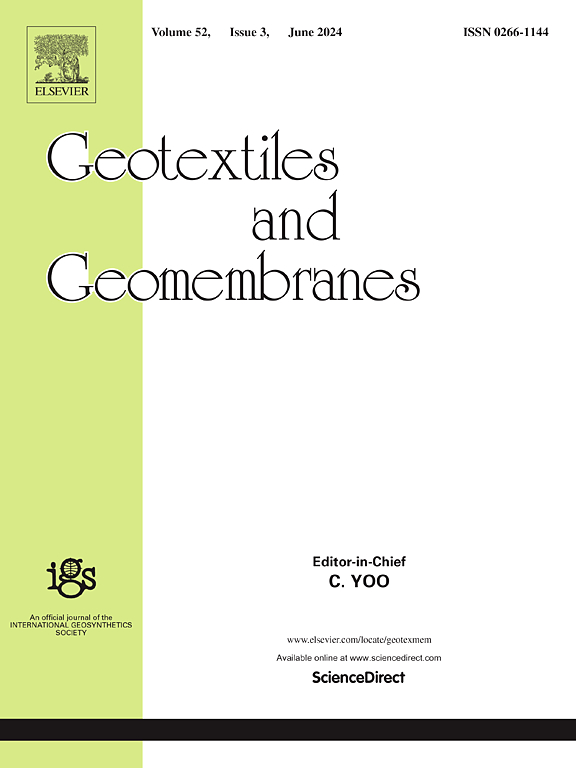基于集成的不同土工格栅抗拔力自动预测方法
IF 6.2
1区 工程技术
Q1 ENGINEERING, GEOLOGICAL
引用次数: 0
摘要
土工格栅拉拔阻力的测定是MSE墙体设计的重要参数,其计算耗时长,成本高。本研究采用随机森林、梯度增强、极端梯度增强(XGB)和光梯度增强的集合方法来预测土工格栅的拉拔阻力因子(F∗)。通过对759个数点的大型拉拔测试数据集的广泛审查,包括各种影响特征,如正应力、相对压实度、细粒含量、填充材料的平均粒径、嵌入长度、极限抗拉强度、土工格栅肋的纵向和横向间距,以及拉拔位移率,用于评估模型。结果表明,XGB (R2 = 0.91, RMSE = 0.18)优于其他集成方法。通过对最佳XGB模型的特征重要性分析,发现正应力、钢筋埋置长度和相对压实度是影响F * *的最大参数。一个简单的模型来预测F *作为一个函数,只有这三个影响参数被提出考虑集成模型。此外,有限的实验室拔出实验进行了评估这些模型。所提出的机器学习模型与实验室F *值拟合得非常好,误差在±3%以内。本文章由计算机程序翻译,如有差异,请以英文原文为准。
Ensemble-based approach for automatic prediction of pullout resistance of geogrids in different soil types
Determination of the pullout resistance of geogrid, an essential parameter in MSE wall design, is time-consuming and expensive. The present study applies ensemble methods, namely, random forest, gradient boosting, extreme gradient boosting (XGB), and light gradient boosting to predict the pullout resistance factor (F∗) of geogrid. An extensive review resulting in a large pullout test dataset of 759 data points encompassing various influencing features such as normal stress, relative compaction, fines content, average particle size of fill material, embedment length, ultimate tensile strength, and longitudinal and transverse spacing of ribs of the geogrid, and pullout displacement rate is used to evaluate models. Results showed that the XGB (R2 = 0.91 and RMSE = 0.18) outperformed the other ensemble approaches. Based on the feature importance analysis on the best-performing XGB model, normal stress, reinforcement embedment length, and relative compaction are found to be the most influencing parameters affecting F∗. A simplistic model to predict F∗ as a function of only these three influencing parameters is proposed considering the ensemble model. Furthermore, limited laboratory pullout experiments are performed to evaluate these models. The proposed machine learning models fitted very well with the laboratory F∗ values with an error within ±3 %.
求助全文
通过发布文献求助,成功后即可免费获取论文全文。
去求助
来源期刊

Geotextiles and Geomembranes
地学-地球科学综合
CiteScore
9.50
自引率
21.20%
发文量
111
审稿时长
59 days
期刊介绍:
The range of products and their applications has expanded rapidly over the last decade with geotextiles and geomembranes being specified world wide. This rapid growth is paralleled by a virtual explosion of technology. Current reference books and even manufacturers' sponsored publications tend to date very quickly and the need for a vehicle to bring together and discuss the growing body of technology now available has become evident.
Geotextiles and Geomembranes fills this need and provides a forum for the dissemination of information amongst research workers, designers, users and manufacturers. By providing a growing fund of information the journal increases general awareness, prompts further research and assists in the establishment of international codes and regulations.
 求助内容:
求助内容: 应助结果提醒方式:
应助结果提醒方式:


